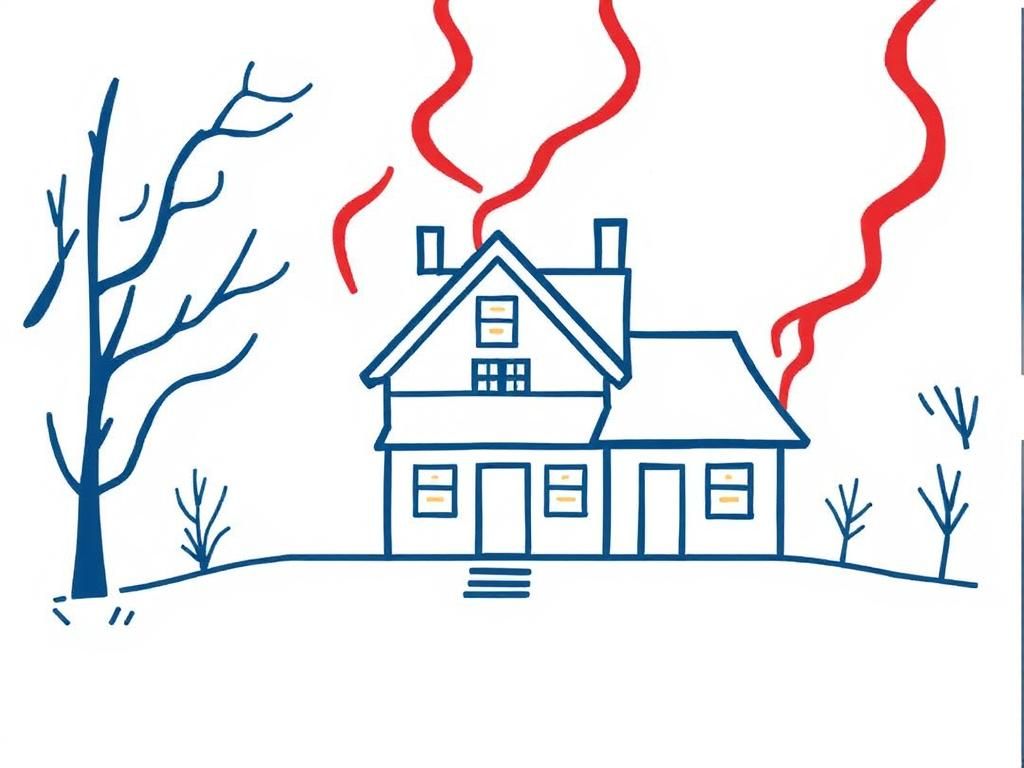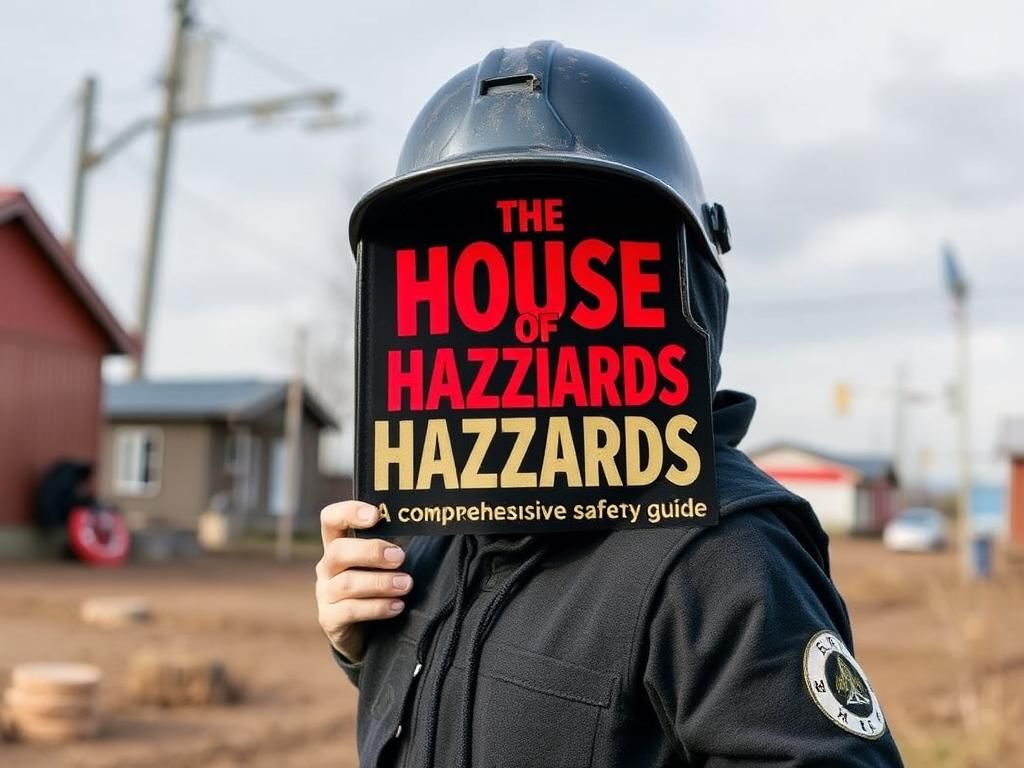The term house of hazzards evokes a crucial understanding of safety in our living spaces. At its core, this concept refers to the various risks and unsafe conditions that can be present in our homes, which, if overlooked, can lead to serious accidents or health concerns. Given that our homes are our sanctuaries, knowledge of potential hazards is vital for ensuring the safety of ourselves and our loved ones. As we navigate modern living, the relevance of recognizing the house of hazzards is more important than ever, considering the increasing complexities of home design, materials used in construction, and the variety of lifestyles we lead.
Historical Context
Origins of the House of Hazzards Concept
The concept of the house of hazzards has evolved significantly over time. Initially, homes were built with minimal understanding of safety standards, often ignoring the potential hazards associated with design and materials. Historically, people began to recognize common risks as they faced various accidents in their homes. For example, in the early 20th century, coal heating systems frequently posed risks of carbon monoxide poisoning, leading to the establishment of safety regulations.
Key Milestones in Safety Regulation and Housing
One of the key milestones in addressing home safety came with the formal introduction of building codes. These codes were developed in response to numerous catastrophic events. For instance, after devastating fires in urban areas, regulations were imposed that outlined fire safety measures, leading to safer construction practices in homes. Major accidents, like the collapse of poorly constructed buildings, have propelled legislative action and established standards aimed at ensuring the integrity and safety of residential buildings.
Common Hazards in Homes
Types of Hazards
Understanding the types of hazards that may be present in a house of hazzards is fundamental to preventing accidents. Some of the most common categories include:
- Physical hazards: These include tripping over uneven floors, slipping in bathrooms, and falling from heights. They can arise from cluttered pathways, loose carpets, or inadequate lighting.
- Chemical hazards: Exposure to toxic materials can stem from household cleaning products, paint fumes, or poorly ventilated areas where hazardous substances are used.
- Biological hazards: Problems such as mold growth and pest infestations can lead to health issues, particularly for sensitive individuals.
Risk Factors
Identifying risk factors associated with the house of hazzards can help mitigate potential dangers:
- Age of the house: Older homes may have outdated infrastructure, which can lead to electrical malfunctions or structural issues.
- Occupants: Homes with children, the elderly, or disabled individuals often require additional safety measures to protect these vulnerable groups.
- Lifestyle choices: Factors such as having pets (which may chew on wires) or engaging in hobbies that involve tools or chemicals can increase risk.
Identifying Hazards in Your Home
Conducting a Home Hazard Assessment
The first step in addressing the house of hazzards is to perform a thorough home hazard assessment. Equip yourself with essential tools such as a flashlight, notepad for observations, and a camera for documentation.
Follow these step-by-step instructions for evaluating each room:
- Start in the kitchen—check for fire hazards near the stove and ensure that cleaners and chemicals are stored safely.
- Move to the bathroom—look for slippery surfaces, inadequate lighting, or plumbing issues.
- In living areas, assess furniture placement and verify the safety of electrical outlets.
Common Hazard Areas
Specific rooms in the home can pose heightened risks:
- Kitchen: Ensure proper food safety practices and address fire risks by avoiding clutter near stoves.
- Bathroom: Install non-slip mats and grab bars to prevent slips and falls.
- Living Areas: Secure furniture to walls and ensure that electrical cords are hidden out of reach of children and pets.
Mitigating Risks and Enhancing Safety
Preventative Measures

To prevent becoming a victim of the house of hazzards, take a proactive approach:
- Maintenance tips: Regularly check plumbing and electrical systems. Replace worn or frayed cords and call a professional for any repairs needed.
- Safety devices: Install smoke detectors and carbon monoxide alarms to alert you to danger. Regularly check and change batteries in these devices.
Safety Regulations and Standards
Familiarize yourself with local building codes related to home safety. Following these regulations can help prevent fines and improve the overall safety of your living conditions.
DIY Solutions and Professional Help
Many hazards can be addressed through simple DIY solutions, such as:
- Securing rugs with non-slip pads to prevent falls.
- Installing locks on cabinets to keep children away from hazardous materials.
For more significant hazards, such as structural issues or complex electrical problems, it’s crucial to seek professional assistance. This ensures compliance with safety standards and proper repairs.
The Role of Technology in Home Safety
Smart Home Devices
Technology plays an enhancing role in mitigating risks in the house of hazzards. Smart home devices, such as:
- Smoke detectors: New models can send alerts to your phone.
- Cameras: Help monitor your home for any suspicious activity or emergencies.
Apps and Resources for Home Safety
Several apps can aid homeowners in maintaining a safe environment:
- Popular safety apps: Some services offer virtual assessments or reminders for safety checks.
- Online resources: Websites like the National Fire Protection Association provide valuable information on making homes safer (NFPA).
Case Studies and Real-Life Examples
Success Stories from Homeowners
Many homeowners have made significant improvements to their home safety, turning their house of hazzards into a safer haven:
- One family replaced their traditional smoke detectors with smart detectors, resulting in faster response times during a minor kitchen fire.
- Another homeowner invested in non-slip flooring, greatly reducing fall risks for their elderly parent.
Famous Incidents Related to Home Hazards
Historically noteworthy incidents have helped shape modern safety legislation:
- The Triangle Shirtwaist Factory fire underscored the need for stricter fire safety regulations in workplaces and homes alike.
- Instances of lead poisoning from lead-based paints led to the eventual bans on their use in residential properties.
Conclusion
Recap of Key Points

The house of hazzards is a critical concept for maintaining a safe living environment. Recognizing the importance of identifying and addressing hazards can lead to a healthier, accident-free home. Through the awareness of common risks, proactive preventative measures, and leveraging technology, homeowners can vastly improve their home safety.
Call to Action
Encouraging readers to take proactive measures in their own homes is essential. Start with a home hazard assessment, utilize safety devices, and educate yourself about local regulations. For further reading, consult resources provided by the Consumer Product Safety Commission (CPSC), which offers valuable insights into home safety.
References and Resources
Recommended Reading
- The Safe Home: A Step-by-Step Guide to Protecting Your Family by John Doe
- Home Safety: A Complete Guide by Jane Smith
Websites and Organizations
Additional Tools
For practical support, consider using online home safety checklists and guides available on various safety websites. Utilize these tools to reinforce safety practices throughout your home.
FAQ
What is a house of hazzards?
A house of hazzards refers to a dwelling that contains potential risks and unsafe conditions that can lead to accidents or health issues.
How can I assess hazards in my home?
Conduct a thorough home hazard assessment by checking every room for physical, chemical, and biological risks.
What are common hazards found in homes?
Common hazards include slips and falls, exposure to toxic chemicals, and mold growth.
What preventative measures can I take?
Implement maintenance practices, utilize safety devices like smoke detectors, and follow local building codes to enhance safety.
Are there any apps for home safety?
Yes, there are several apps available that provide resources and reminders for maintaining home safety.
When should I seek professional help for home hazards?
Seek professional help for serious issues like structural damage, extensive electrical problems, or major plumbing issues.
How can technology help in enhancing home safety?
Smart devices like detectors, cameras, and safety apps significantly improve real-time monitoring and hazard detection.
Why is it important to follow building codes?
Following building codes is essential as they are designed to minimize risks and enhance safety in residential properties.
What is the importance of a home safety checklist?
A home safety checklist helps you systematically assess potential hazards, reinforcing proactive safety measures throughout your home.
Can children be a risk factor in home safety?
Yes, children are more vulnerable to hazards. Children’s safety must be prioritized by securing potentially dangerous areas and materials.